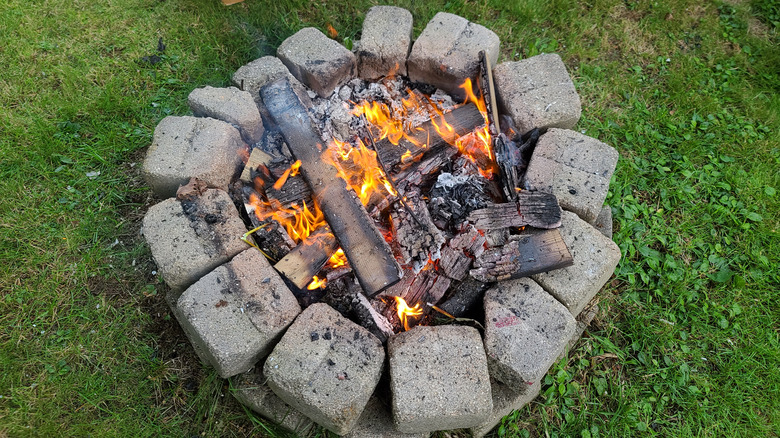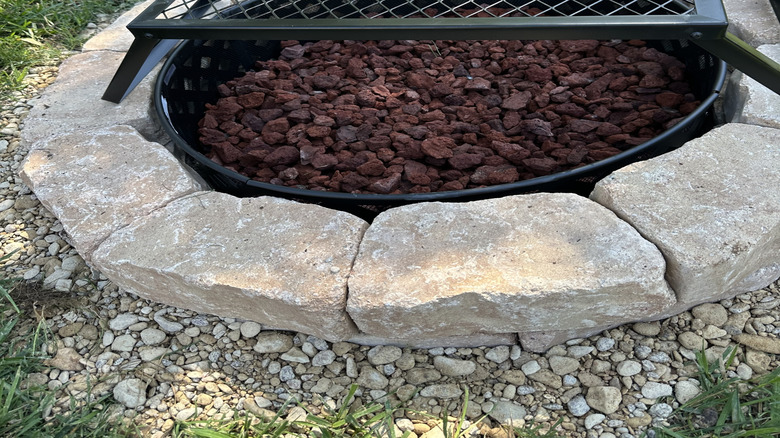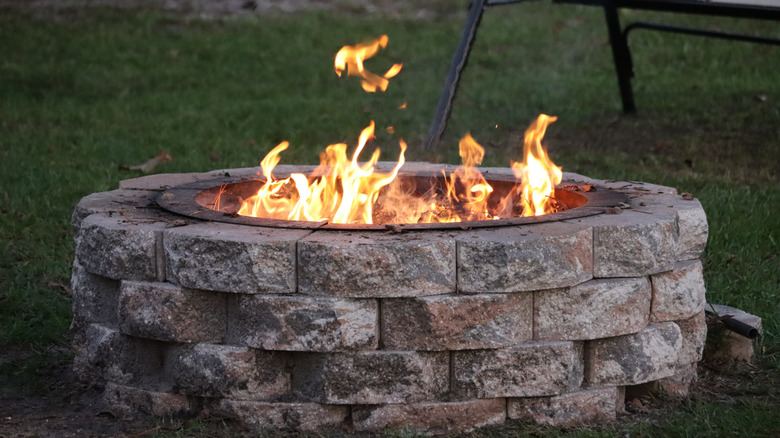Avoid These Mistakes When DIYing Your Backyard Fire Pit
We may receive a commission on purchases made from links.
Fire pits can be a lot of fun to have at home and can serve as a great spot to hang out with family and friends. If you've decided that you'd like to install one in your yard, there are a few paths you can take to make it happen. You can buy a portable fire pit like the Solo Stove Yukon 2.0, get a professional installation, or build a fire pit yourself. Fortunately, it's fairly easy to build an easy DIY fire pit in the backyard, so this is definitely a great option to consider if you're on a budget.
Despite this, you'll need to consider many things carefully when building a fire pit to get it right. Safety should be a top priority. You should also know all your local laws and regulations before you start building. A fire pit is meant for containing fire, after all, so there are hazards you should watch out for so that all your hard work won't go up in flames. You should especially think about the placement of the fire pit in relation to other (flammable) things on your property. In addition to this, you'll also need to avoid mistakes in the materials you choose to build it with as well as the aesthetic appeal of the fire pit.
Prioritize safety when building a DIY fire pit at home
The safety of you and your family should be a top priority when building a fire pit, as should the protection of any structures or items that are in its vicinity. For starters, make sure that you don't place the backyard fire pit too close to the home. Always install a fire pit at least 25 feet away from your house and other structures, or it can serve as a fire hazard. Similarly, don't place it too close to shrubs, plants, trees, fencing, and other flammable objects. It can even be risky to place a stack of firewood or other materials for burning too nearby, in case a spark were to make its way there and sets everything ablaze.
With safety in mind, it's important to construct the fire pit well. In addition to making sure that the fire is unable to escape its designated spot, consider making use of safety accessories. Adding a fire screen is a great idea and can prevent ash and sparks from traveling too far. It's also a good idea to keep a fire extinguisher ready, just in case there's a problem. Once the fire pit is installed, of course, also be careful about how you use it. Never leave it unattended and always put it out fully when you're done using it.
Other mistakes to avoid when building a fire pit
Other than safety issues, one of the biggest mistakes made with a DIY fire pit is failing to consult your local fire department, HOA, and any other county or city laws beforehand. Make sure you have permission first, as many wildfire-prone areas will have strict regulations. In addition to building it away from flammable materials and the home, don't choose your permanent fire pit location on a whim, since the placement can greatly change your yard and its overall curb appeal. Be certain of its chosen location. If you're unsure, you may want to consider purchasing a portable fire pit first. Also, be careful where you dig. You don't want to make the mistake of digging up plumbing, wires, or anything you're not supposed to.
If you're building your own fire pit, compare the different materials and types of fire pits for your outdoor space carefully. Metal may rust over time, while bricks and other materials may crack when up against high heat. Avoid using certain rocks that explode around fire pits, such as limestone, sandstone, and slate. Failing to consider various fuel sources and options is also a big no-no. Wood burning for a traditional fire pit can be a great option, but also takes a lot of work to use. As an alternative, you may want to use natural gas, propane, or ethanol as a fuel source instead.


